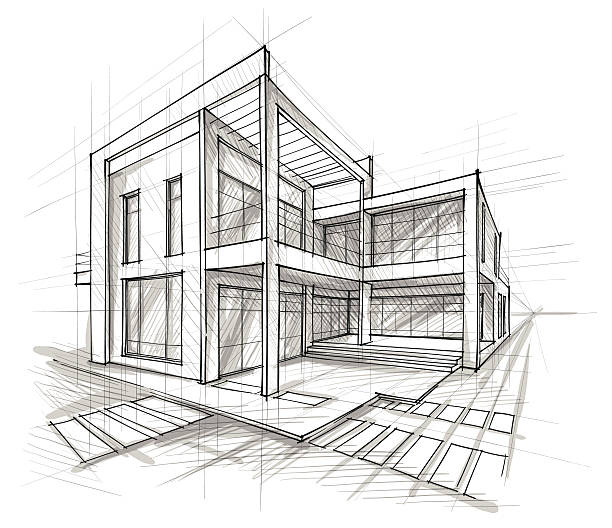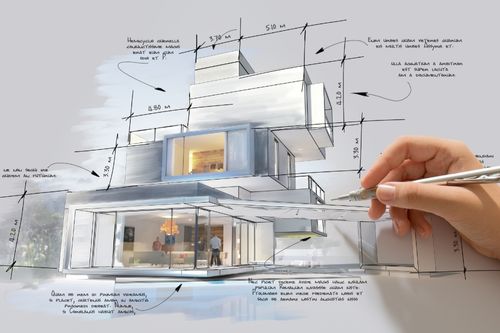Comprehending the Collaborative Refine Between Engineers and Designers in Modern Construction Projects
The joint process in between engineers and engineers is essential in contemporary building tasks, as it harmonizes design intent with engineering usefulness. This collaboration not just influences the visual and useful facets of a task however likewise plays an important duty in resolving sustainability obstacles. By utilizing reliable interaction methods and leveraging advanced innovations, such as Structure Info Modeling (BIM), groups can work much more cohesively. The ins and outs of this collaboration commonly present special difficulties that can hinder progress. Exploring these dynamics reveals understandings that can considerably affect project results and total market standards. cda architects.
The Significance of Partnership
The collective harmony in between engineers and designers is necessary for the successful realization of any kind of building and construction project. This partnership combines distinct knowledge and point of views, enabling the combination of ingenious style with useful engineering services. By working with each other, designers and engineers can ensure that a job not only meets aesthetic and useful demands however additionally sticks to safety, sustainability, and budgetary restrictions.
Collaboration promotes a common vision, facilitating the alignment of objectives and assumptions from the outset. This alignment is critical in resolving possible obstacles and mitigating dangers that might develop during the project lifecycle. A collaborative strategy enables for the efficient allocation of resources, optimizing both time and price.
The relevance of cooperation expands to the iterative process of design and construction, where responses from engineers can notify building choices, causing more practical and lasting designs. Alternatively, engineers can motivate designers to think creatively concerning exactly how to attain architectural stability without endangering imaginative intent. Inevitably, the joint relationship between designers and designers is not just valuable; it is basic to the creation of top notch, practical, and cutting-edge built settings that satisfy the needs of society.
Interaction Techniques and Devices
Effective interaction techniques and devices are vital for fostering collaboration between architects and designers throughout the task lifecycle. Developing clear channels of interaction is important to make certain that all team participants are lined up with task purposes, timelines, and duties. Routine conferences, both in-person and online, provide opportunities for stakeholders to review development, address issues, and make notified choices.

Furthermore, embracing collaborative communication devices, such as Slack or Microsoft Teams, enables immediate messaging, data sharing, and ongoing conversations, advertising a much more dexterous action to emerging problems. Document administration systems additionally play an essential role in organizing job documentation, making sure that all staff member have accessibility to the most recent information.
Shared Objectives and Project Vision
An unified project vision offers as the structure for effective partnership between designers and designers (cda architects). This shared vision not just straightens the efforts of both events however additionally establishes a common framework for decision-making throughout the project's lifecycle. By verbalizing clear goals, stakeholders can effectively browse the complexities of modern-day building and construction projects, making certain that both aesthetic and useful demands are satisfied
Establishing common objectives involves open dialogue and a comprehensive understanding of each discipline's payments. Architects usually concentrate on layout intent, spatial this hyperlink relationships, and individual experience, while engineers highlight structural stability, systems functionality, and compliance with guidelines. When these perspectives are straightened, the outcome is a cohesive project that complies with both imaginative desires and technical expediency.
Moreover, a distinct project vision promotes liability among staff member, encouraging each individual to take ownership of their function in achieving the wanted result. Normal check-ins and collective workshops can further strengthen this commitment, enabling for changes to be made as the task evolves. Inevitably, a shared vision not just enhances teamwork however likewise boosts the quality of the last deliverable, causing effective job conclusion.
The Role of Technology
Leveraging technology has actually come to be vital in boosting partnership in between engineers and engineers. The assimilation of advanced software devices promotes real-time communication and info sharing, making it possible for groups to function much more effectively and efficiently. Structure Details Modeling (BIM) attracts attention as a crucial technology, allowing both designers and engineers to create in-depth 3D designs that encapsulate layout intent and structural honesty. This common visual representation lessens misunderstandings and streamlines the decision-making procedure.
Moreover, cloud-based systems enable seamless collaboration, allowing project stakeholders to gain access to and update task information from anywhere. This fosters a culture of openness and responsibility, as changes can be tracked and evaluated in real-time. Furthermore, mobile applications further improve communication, providing on-site teams with instant accessibility to project specs and updates.
Emerging technologies such as man-made knowledge and machine understanding are also beginning to play a role in predictive evaluation, assisting groups determine potential problems prior to they arise. Ultimately, the duty of modern technology in architecture-engineering collaboration here are the findings not only improves operations performances but likewise improves development, causing even more effective project outcomes. By accepting these technological developments, engineers and engineers can make sure a much more cohesive and efficient joint process throughout the construction lifecycle.
Case Research Studies in Effective Collaborations
Many case researches show the extensive impact of effective partnerships in between architects and designers on project results. One significant instance is the cooperation on the High Line in New York City, where landscape designers, engineers, and metropolitan organizers collaborated to transform a deserted rail line into a dynamic public park. This multidisciplinary strategy not just boosted the visual top quality yet likewise made certain structural safety and environmental sustainability.

The Burj Khalifa in Dubai further demonstrates the relevance of collaborative initiatives - cda architects. The integration of architecture and engineering experience made it possible for the task group to accomplish unprecedented heights while adhering to safety and security laws and aesthetic vision
These examples highlight the significance of interaction, trust fund, and shared objectives. In today's complex go to my site construction environment, such partnerships are necessary to browsing difficulties and supplying projects that meet both useful and visionary objectives.
Verdict
To conclude, the collaboration in between architects and engineers is crucial for the success of modern construction tasks. Effective interaction techniques, a shared job vision, and the integration of sophisticated technologies are critical elements that facilitate this partnership. By promoting a culture of responsibility and leveraging devices such as Building Information Modeling (BIM), teams can navigate task complexities, ensuring that visual, functional, and sustainability objectives are achieved. Ultimately, this harmony brings about ingenious and successful job outcomes.